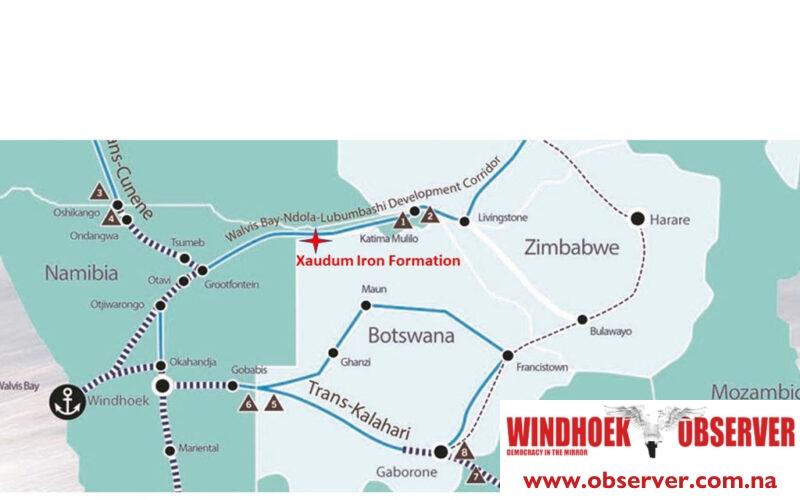CHAMWE KAIRA
The proposed Trans-Zambezi Railway Extension Grootfontein-Rundu-Katima Mulilo is very important for Tsodilo Resources Limited, which is developing the Xaudum Iron Project in Botswana close to the Namibian border.
The company’s chairman and CEO, James Bruchs, said the railway line is very important for the rail shipment, once the Xaudum Iron Project is off the ground.
In September, the Namibian Cabinet has approved the final feasibility study for the Trans-Zambezi Railway Extension Grootfontein-Rundu-Katima Mulilo.
The extension of the Grootfontein-Katima Mulilo will connect Namibia, Zambia and Botswana, through Ngoma up to Kasane, and link up with Zimbabwe and Zambia, up to the Democratic Republic of Congo.
The cross-border rail project aims to link new mines and mining activities to the railway network along the Walvis Bay – Ndola – Lubumbashi Development Corridor to enable transportation of minerals from the Copperbelt to Walvis Bay.
The rail extension is an important development for Tsodilo as it opens up a proximate rail transportation system for the delivery of its Xaudum Iron Formation project’s potential iron products, such as iron concentrate, iron pellets, potential direct reduced iron (DRI) products, and Ferrosilicone (FeSi), throughout central, eastern and southern Africa as well as international markets.
The proposed rail extension between Grootfontein and Katima Mulilo is significant as the extension is planned to pass through Divundu in Namibia which is located 35 kilometers from its license location in Northern Botswana.
Tsodilo Resources Limited has already joined the Walvis Bay Corridor Group (WBCG). The Walvis Bay Corridors are an integrated system of well-maintained tarred roads and rail networks – accommodating all modes of transport – from the Port of Walvis Bay via the Trans Kalahari, Walvis Bay-Ndola-Lubumbashi Development Corridor (previously known as the Trans-Caprivi), Trans-Cunene and Trans-Oranje Corridors providing landlocked SADC countries access to transatlantic markets.
The corridors, serving the two ports, is a network of transport routes from the neighboring SADC countries of Angola, Botswana, Democratic Republic of Congo, Malawi, South Africa, Zambia and Zimbabwe.




